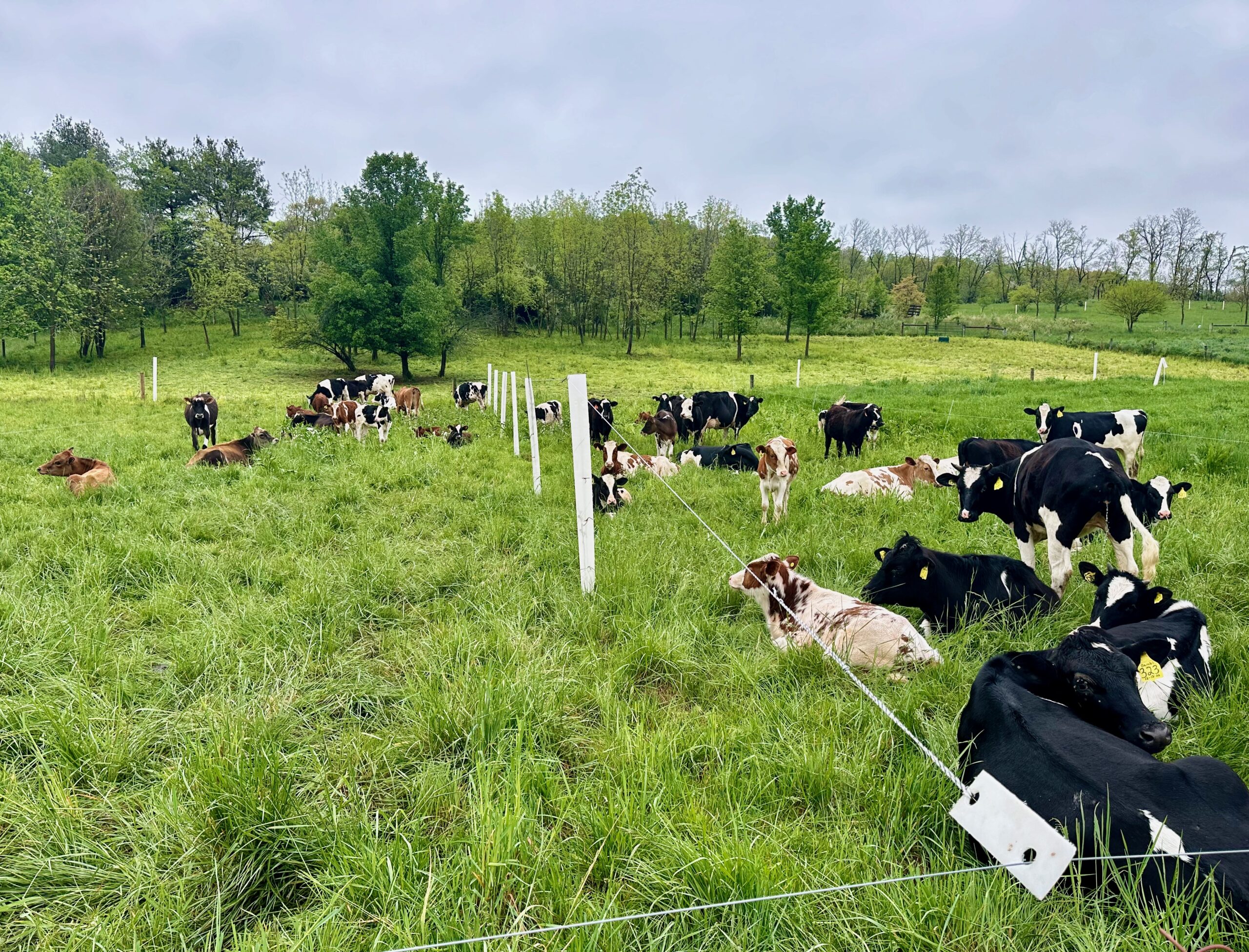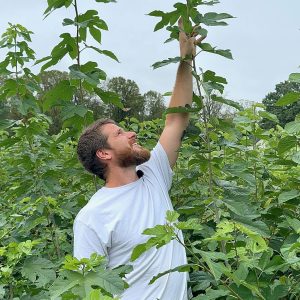As you well know, there are many reasons to strategically plant trees in pastures: shade, windbreak, dropping feed, growing timber, etc. The problem isn’t that folks don’t want trees, or don’t know the benefit of trees. It’s mostly that planting trees in a pasture can be really tough and, when unsuccessful, expensive and frustrating. I’ve met many successful, thoughtful farmers who have planted trees again and again, with few mature trees to show for it. Not only do you have deer, rabbits, mice and all kinds of other critters to contend with, but you may have any combination of cattle, pigs, sheep, and poultry, all trying to eat or rub on a tree. Plus, there’s the grass you want in the pasture, but not right around a small tree. These factors combine to make planting trees in active pastures very challenging indeed, without the right system.

Thankfully, we’ve tried a lot of things here at Trees For Graziers and have found some methods that work quite well.
The easiest way we’ve found to protect a tree in active pastures is to start with the right tree shelter, specifically a Plantra SunFlex system. We use 6 foot shelters when working with cattle while the 5 footers offer enough protection for sheep or deer. The tubes are tall enough to prevent browse, and the fiberglass stakes are flexible enough to take a hit. Both the tube and stake are electrical insulators, which allows you to use electric fencing to protect the tubes from rubbing.

The simplest way to protect the shelters is to run a single strand of polywire along the row, and attach the wire directly to the shelter. The tree row can then serve as a paddock division. The other main method we use is called the overpass. For this, poke a hole in the top of the tube, just an inch or so from the top. Thread a wire or zip tie through it and then run your polywire at the top of the shelter, so livestock can freely move beneath it. Lastly, wrap a length of aluminum wire (about 8 feet long) first around the polywire and then around the shelter so that the whole tube is electrified. It’s a very simple, effective system that allows you to continue moving livestock and adapting paddock sizes according to livestock needs.

Now that keeping the shelter protected from livestock is taken care of, we still need to make sure the tree survives in its new pastoral home. While livestock can claim the life of a seedling, so can rodents and weeds.
Start by digging a generous hole about three times larger than you need, which will break up roots of vegetation that might otherwise compete, giving nice friable soil for the tree roots to expand into. Depending on your resources, you can do this with an auger or a simple shovel. We place a short vole guard (essentially a small piece of deer wrap) around each tree, one that sits close to the seedling and prevents any rodent that might get into the tube from girdling the tree. Once the tree is in the ground with the vole guar and tree shelter in place, we like to add about 10 gallons (2 buckets) of wood chips to each tree. The wood chips serve as mulch to keep weeds down, conserve soil moisture, and create a more fungal soil biology. Lastly, we drop a 50/50 mix of castor oil and blood meal inside the tube in the fall, with the aim of deterring rodents that might want to gnaw at the roots.

Now that you know it’s possible to establish trees in active pastures, without much change to your grazing practice, I encourage you to add trees to your pastures. As you begin, start small, planting, say, 10 trees to get a feel for it, then scale up!
We’re happy to supply you with tree shelters and have a growing supply of trees—which will only increase in the years ahead.




